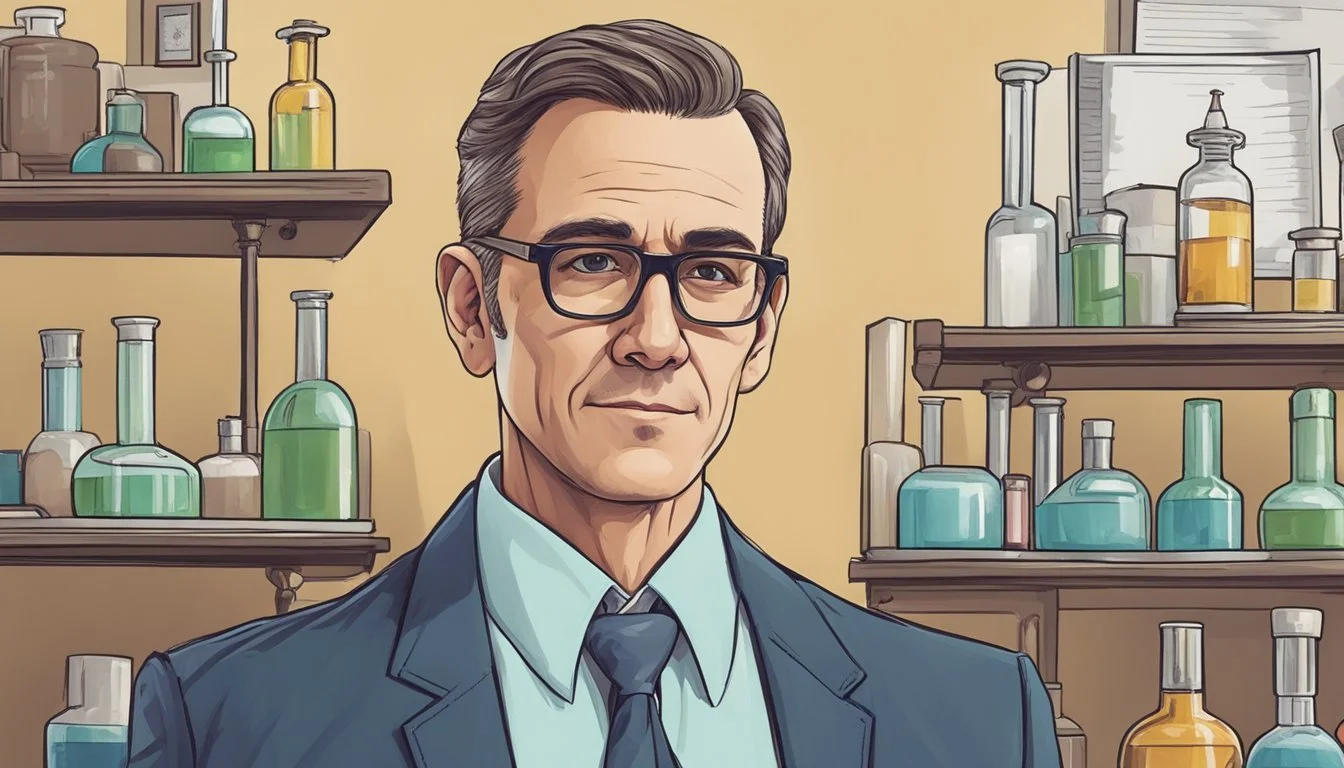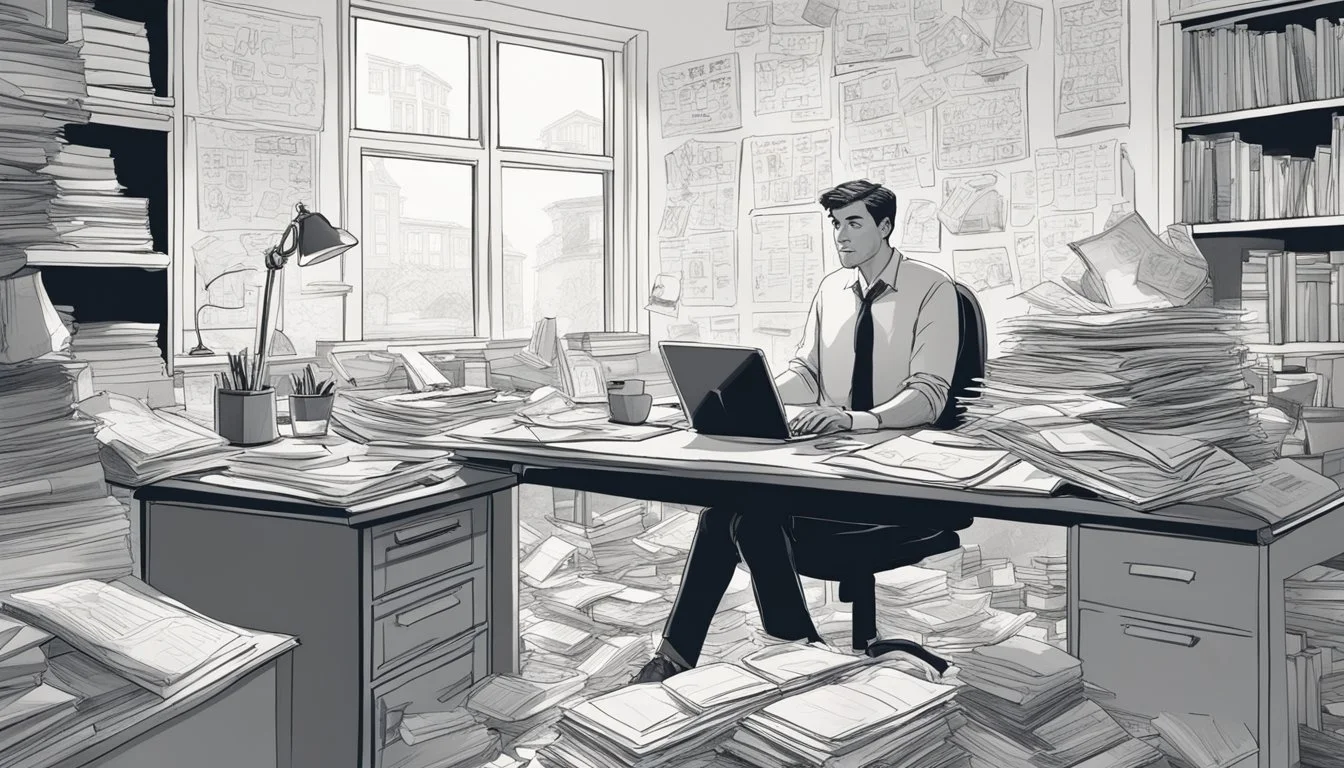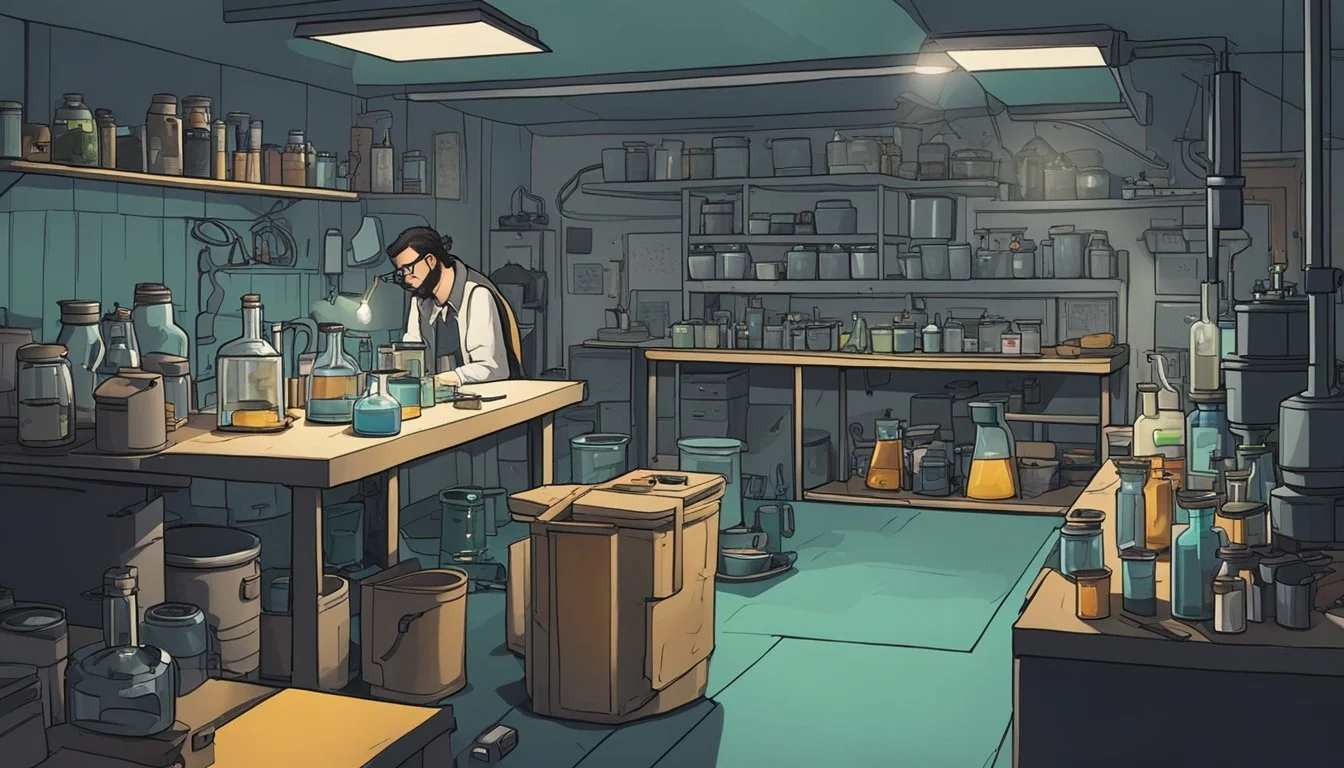The Genesis of Breaking Bad
Vince Gilligan's Eureka Moment That Sparked a TV Revolution
Breaking Bad emerged as a cultural phenomenon that redefined television drama in the early 21st century. The show's creator, Vince Gilligan, struck gold with his concept of a mild-mannered chemistry teacher transforming into a ruthless drug kingpin. Gilligan's inspiration for Breaking Bad came during a conversation with a friend about the idea of a law-abiding citizen suddenly becoming an outlaw drug dealer.
This spark of creativity led to the development of Walter White, the series' complex protagonist portrayed by Bryan Cranston. Gilligan's innovative approach to storytelling and character development set a new standard for TV dramas. The show's premise allowed for an exploration of moral ambiguity and the consequences of choices, themes that resonated deeply with audiences.
Breaking Bad's genesis demonstrates the power of a single idea to revolutionize an entire medium. Gilligan's ability to expand on his initial concept resulted in a critically acclaimed series that captivated viewers for five seasons. The show's success highlights the importance of creative risk-taking in television production and the potential for original ideas to reshape the landscape of popular entertainment.
Vince Gilligan: The Man Behind the Myth
Vince Gilligan's journey from a small-town upbringing to creating one of television's most acclaimed series is a testament to his creative vision and storytelling prowess. His experiences and influences shaped the unique perspective that would eventually birth Breaking Bad.
Early Career and Influences
Vince Gilligan grew up in Farmville, Virginia, where his love for storytelling blossomed at an early age. He studied film at New York University's Tisch School of the Arts, honing his craft and developing his distinctive voice.
Gilligan's early career was marked by a passion for blending genres and exploring complex characters. He wrote the screenplay for the 1993 film "Wilder Napalm," showcasing his ability to craft quirky, offbeat stories.
His talent caught the attention of industry professionals, leading to opportunities that would shape his future in television.
From 'The X-Files' to 'Breaking Bad'
Gilligan's big break came when he joined the writing team of "The X-Files" in 1995. This experience proved invaluable, allowing him to refine his skills in crafting suspenseful narratives and developing intricate plot lines.
During his tenure on "The X-Files," Gilligan wrote and produced numerous episodes, earning critical acclaim and a loyal fan base. This period laid the groundwork for his future success.
The idea for "Breaking Bad" struck Gilligan during a conversation with a fellow writer. The concept of a mild-mannered chemistry teacher turning to a life of crime resonated deeply, inspiring him to create Walter White's compelling journey.
The Conception of 'Breaking Bad'
Vince Gilligan's creation of 'Breaking Bad' stemmed from a unique blend of personal circumstances and creative inspiration. The show's concept emerged from an unexpected source, evolving into one of television's most acclaimed series.
The Spark of Inspiration
Gilligan's eureka moment for 'Breaking Bad' came during a phone conversation with a fellow writer. They joked about creating a mobile meth lab as a solution to their career struggles. This offhand remark planted the seed for what would become a groundbreaking television series.
The idea of a regular person turning to crime resonated with Gilligan. He saw potential in exploring the transformation of an ordinary individual into someone extraordinary, albeit through illegal means.
Gilligan drew from his experience working on 'The X-Files' to craft a compelling narrative. His background in blending drama with unconventional elements proved invaluable in developing the show's unique premise.
Developing the Character of Walter White
Walter White emerged as the embodiment of Gilligan's concept. A high school chemistry teacher diagnosed with cancer, Walt became the vehicle for exploring moral ambiguity and personal transformation.
Gilligan envisioned Walt as a sympathetic figure initially driven by desperation to provide for his family. This motivation would gradually shift as the character embraced his new criminal persona.
Bryan Cranston was cast as Walter White, bringing depth and nuance to the role. His portrayal helped solidify the character's complex journey from "Mr. Chips to Scarface," as Gilligan famously described it.
Pitching the Show to AMC
Pitching 'Breaking Bad' proved challenging due to its unconventional premise. Many networks were hesitant to green-light a show centered on methamphetamine production.
AMC, looking to expand its original programming, saw potential in Gilligan's vision. The network was willing to take a risk on the show's darker themes and morally complex characters.
Gilligan's pitch emphasized the show's unique blend of drama, dark humor, and character development. He highlighted Walt's transformation as the core of the series, promising a story unlike anything else on television.
Walter White: The Evolution of a Character
Walter White's transformation from a mild-mannered chemistry teacher to a ruthless drug kingpin is the core of Breaking Bad. His journey explores the complexities of morality, family, and identity.
Walt's Transformation
Walter White begins as an underachieving high school chemistry teacher. His cancer diagnosis catalyzes a drastic change, pushing him into the meth business. Initially, Walt cooks meth to secure his family's financial future.
As the series progresses, Walt's skills in chemistry and strategy come to the forefront. He adopts the alias "Heisenberg" and gains notoriety in the drug world. His intellect and ruthlessness allow him to outmaneuver rivals and law enforcement.
Walt's physical appearance changes too. He shaves his head and grows a goatee, symbolizing his embrace of a new identity.
Anatomy of an Antihero
Walt embodies the classic antihero archetype. His actions become increasingly morally ambiguous and often outright villainous. Yet, viewers often find themselves rooting for him.
Walt's brilliance and determination make him compelling. His ability to outsmart opponents creates thrilling scenarios. However, his ego and pride lead to many of his downfalls.
The show explores how power corrupts. Walt's initial noble intentions give way to a desire for control and recognition. His famous line "I am the one who knocks" encapsulates his transformation into a feared figure.
Family and Morality
Walt's relationship with his family is central to his character arc. He initially justifies his illegal activities as necessary for their well-being. This includes providing for his son with cerebral palsy and his unborn daughter.
As Walt descends further into the criminal world, his family relationships strain. His wife Skyler becomes complicit in his crimes, altering their dynamic. Walt's brotherly bond with his brother-in-law Hank, a DEA agent, adds another layer of moral complexity.
The series questions whether Walt's actions are truly for his family or for his own ego. His choices often endanger the very people he claims to protect.
Supporting Cast and Character Dynamics
Breaking Bad's complex web of relationships and nuanced character portrayals elevated the show beyond a typical crime drama. The supporting cast brought depth and tension to Walter White's journey, creating a rich tapestry of moral ambiguity and human struggle.
Jesse Pinkman: From Sidekick to Standalone
Jesse Pinkman, portrayed by Aaron Paul, evolved from a small-time drug dealer into a pivotal character. Initially serving as Walter's reluctant partner, Jesse's arc became increasingly central to the show's narrative. His vulnerability and moral struggles provided a stark contrast to Walter's descent into villainy.
Paul's Emmy-winning performance brought authenticity to Jesse's tortured path. The character's growth from a directionless youth to a man grappling with the consequences of his choices resonated deeply with audiences.
Jesse's relationships, particularly with Walter and his family, highlighted the show's themes of loyalty, betrayal, and redemption. His journey paralleled Walter's in many ways, yet took drastically different turns.
Skyler White and Family Dynamics
Skyler White, Walter's wife, became a lightning rod for the series' exploration of family under pressure. Her transformation from an oblivious spouse to an active participant in Walter's criminal enterprise added layers of complexity to the show's moral landscape.
The White family's disintegration served as a poignant backdrop to Walter's rise in the drug world. Skyler's attempts to protect her children while navigating her husband's lies created compelling drama.
Breaking Bad deftly portrayed the ripple effects of Walter's choices on his loved ones. The strain on marriages, parent-child relationships, and sibling bonds added emotional depth to the series.
Adversaries and Allies
The show's antagonists and supporting characters brought diversity and unpredictability to the narrative. Gus Fring, the composed yet ruthless drug kingpin, provided a formidable opponent for Walter.
Hank Schrader, Walter's DEA agent brother-in-law, added tension and moral complexity as he unknowingly pursued his own family member. His dogged pursuit of "Heisenberg" created some of the series' most gripping moments.
Saul Goodman, the colorful lawyer, injected dark humor into the show while highlighting the seedy underbelly of the legal system. His connections and schemes often saved Walter and Jesse from dire situations.
Characters like Mike Ehrmantraut and Lydia Rodarte-Quayle expanded the show's criminal world, each bringing unique motivations and methods to the table.
Breaking Bad's Unique Narrative Structure
Breaking Bad revolutionized television storytelling with its innovative approach to narrative structure. The show's distinctive use of flash-forwards and carefully crafted story arcs set it apart from traditional series.
The Use of Flash-Forwards
Breaking Bad's pilot episode opens with a flash-forward, immediately grabbing viewers' attention. This technique becomes a signature element throughout the series. Flash-forwards create intrigue and tension, offering tantalizing glimpses of future events.
The show's creators use these glimpses strategically, keeping audiences guessing about how characters reach certain points. This non-linear approach enhances the viewing experience, encouraging speculation and theories among fans.
Crafting the Story Arc
Vince Gilligan and his team meticulously planned Breaking Bad's overarching narrative. The show's story arc follows Walter White's transformation from a mild-mannered chemistry teacher to a ruthless drug lord.
Each season builds upon the previous one, with actions having far-reaching consequences. Characters evolve in complex, often unexpected ways. The writers maintain a delicate balance between episodic storytelling and long-term plot development.
This careful structure allows for both satisfying individual episodes and a cohesive overall narrative. Breaking Bad's finale ties together numerous plot threads, providing a sense of completion to the series' intricate storytelling.
The Iconic Elements of the Series
Breaking Bad's unique blend of characters, themes, and setting created an unforgettable viewing experience. The show's iconic elements became cultural touchstones that set it apart from other series.
The High School Chemistry Teacher Turned Drug Lord
Walter White's transformation from a mild-mannered chemistry teacher to a feared drug kingpin captivated audiences. His initial motivation - providing for his family after a terminal cancer diagnosis - resonated with viewers. As the series progressed, Walt's descent into criminality revealed his hidden desires for power and recognition.
Bryan Cranston's nuanced portrayal brought depth to Walt's character. His ability to shift from sympathetic father to ruthless criminal kept viewers on edge. The character's signature look - bald head, goatee, and pork pie hat - became instantly recognizable.
Walt's scientific expertise set him apart in the drug world. His background as a chemist allowed him to produce a superior product, earning him the moniker "Heisenberg" in criminal circles.
The Making of Crystal Meth: A Hallmark of the Show
Crystal meth production became a central focus of Breaking Bad. The show's depiction of the drug-making process was meticulous and visually striking. Blue-tinted crystals and billowing smoke created a distinctive aesthetic.
The series consulted with DEA chemists to ensure accuracy in portraying meth production. However, key details were omitted or altered to prevent the show from becoming an instructional guide.
Scenes of Walt and Jesse cooking meth in unusual locations - from an RV to an underground lab - became iconic. These sequences often featured montages set to unconventional music choices, creating a unique viewing experience.
Albuquerque as a Character
The city of Albuquerque, New Mexico played a crucial role in Breaking Bad's identity. Its stark desert landscapes and distinctive architecture provided a vivid backdrop for the story.
Filming on location gave the show an authentic feel. Viewers became familiar with local landmarks like the car wash, Los Pollos Hermanos restaurant, and Walt's home.
The city's position near the Mexican border added to the series' exploration of the drug trade. Albuquerque's mix of cultures and economic realities informed the show's portrayal of its characters and their motivations.
Local slang and cultural references peppered the dialogue, further embedding the story in its setting. The city's warm color palette of oranges, reds, and browns became synonymous with the show's visual style.
Production and Cinematography
Breaking Bad's visual style and production approach set new standards for television. The show's creators meticulously crafted each element to enhance the storytelling and create a unique viewing experience.
Bringing the Scripts to Life
Vince Gilligan worked closely with directors and crew to translate his vision from script to screen. He emphasized a cinematic approach, using techniques more common in film than television. The production team employed innovative camera angles and movements to heighten tension and reveal character emotions.
Gilligan's attention to detail extended to every aspect of production. He insisted on authenticity in set design, props, and costumes. This commitment created a rich, immersive world that felt real to viewers.
The show's pacing was carefully controlled. Slow, deliberate scenes contrasted with intense action sequences, keeping audiences on edge.
Capturing the Essence of Albuquerque
Albuquerque played a crucial role in Breaking Bad's visual identity. The production team showcased the city's unique landscapes and architecture, making it a character in its own right.
The harsh desert sunlight and wide-open spaces of New Mexico created a stark, unforgiving backdrop for the story. Cinematographers used this natural lighting to their advantage, often shooting during "magic hour" to capture the warm, golden hues of the Southwest.
Local locations were carefully selected to reflect the characters' circumstances. From Walter White's modest suburban home to the vast desert expanses where key scenes unfolded, each setting contributed to the show's atmosphere.
The Role of Sony Television
Sony Television provided crucial support that allowed Breaking Bad to flourish. The studio gave Gilligan significant creative freedom, trusting his vision for the show.
This backing allowed for higher production values than typical for cable television at the time. Sony's resources enabled the use of cutting-edge equipment and techniques, elevating the show's visual quality.
The studio also supported the show's long-term storytelling approach. Despite initial low ratings, Sony allowed Breaking Bad time to build its audience, recognizing its potential for critical acclaim and cult status.
Sony's international distribution network helped the show reach a global audience, contributing to its widespread impact and enduring legacy.
Cultural Impact and Legacy
Breaking Bad's influence on television and popular culture is profound and enduring. The show redefined storytelling in TV dramas and left an indelible mark on the entertainment landscape.
Defining the Golden Age of TV Dramas
Breaking Bad emerged as a cornerstone of the Golden Age of Television. Its complex characters, morally ambiguous themes, and intricate storytelling set new standards for TV dramas. The series showcased the potential of long-form narrative television, encouraging networks and streaming platforms to invest in high-quality, character-driven content.
Critics and audiences alike praised Breaking Bad for its cinematic quality and depth. The show's success paved the way for other ambitious drama series to flourish.
Influence on Television and Pop Culture
Breaking Bad's impact extended beyond the realm of television. The show's iconic imagery, quotable dialogue, and memorable characters permeated popular culture. Walter White's transformation from "Mr. Chips to Scarface" became a cultural touchstone, inspiring countless memes, Halloween costumes, and fan theories.
The series influenced storytelling techniques in subsequent TV dramas. Its use of visual symbolism, foreshadowing, and non-linear narrative structures inspired other creators to push boundaries in their own work.
Breaking Bad also revitalized interest in Albuquerque, New Mexico, where the show was set and filmed. Tourism to the area increased as fans sought out iconic locations from the series.
The Legacy Lives On
Breaking Bad's legacy continues through its successful spin-off, Better Call Saul, and the Netflix film El Camino. These extensions of the Breaking Bad universe demonstrate the enduring appeal of Vince Gilligan's creation.
The show's influence is evident in the rise of antihero-led dramas and serialized storytelling across television networks and streaming platforms. Breaking Bad raised audience expectations for TV drama quality, compelling other series to strive for similar levels of complexity and production value.
Its impact on actors' careers, particularly Bryan Cranston and Aaron Paul, highlights how prestige TV can elevate performers to new heights of recognition and critical acclaim.
Conclusion: The Enduring Resonance of 'Breaking Bad'
Breaking Bad's impact on television remains unparalleled. The series finale drew a record 10.3 million viewers, a stark contrast to the 1.41 million who watched the pilot in 2008.
Vince Gilligan's meticulous storytelling and attention to detail elevated the show to legendary status. The final season masterfully tied up loose ends while delivering unexpected twists.
Walter White's transformation from Mr. Chips to Scarface captivated audiences worldwide. This complex character arc became a cultural touchstone, sparking discussions about morality and consequences.
The show's legacy extends beyond its original run. It continues to attract new viewers through streaming platforms and inspire analysis of its themes and symbolism.
Breaking Bad's influence on the television landscape is undeniable. It raised the bar for storytelling, character development, and visual aesthetics in episodic dramas.
The series' enduring popularity speaks to its universal themes and compelling narrative. Years after its conclusion, Breaking Bad remains a benchmark for quality television.




